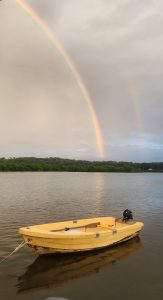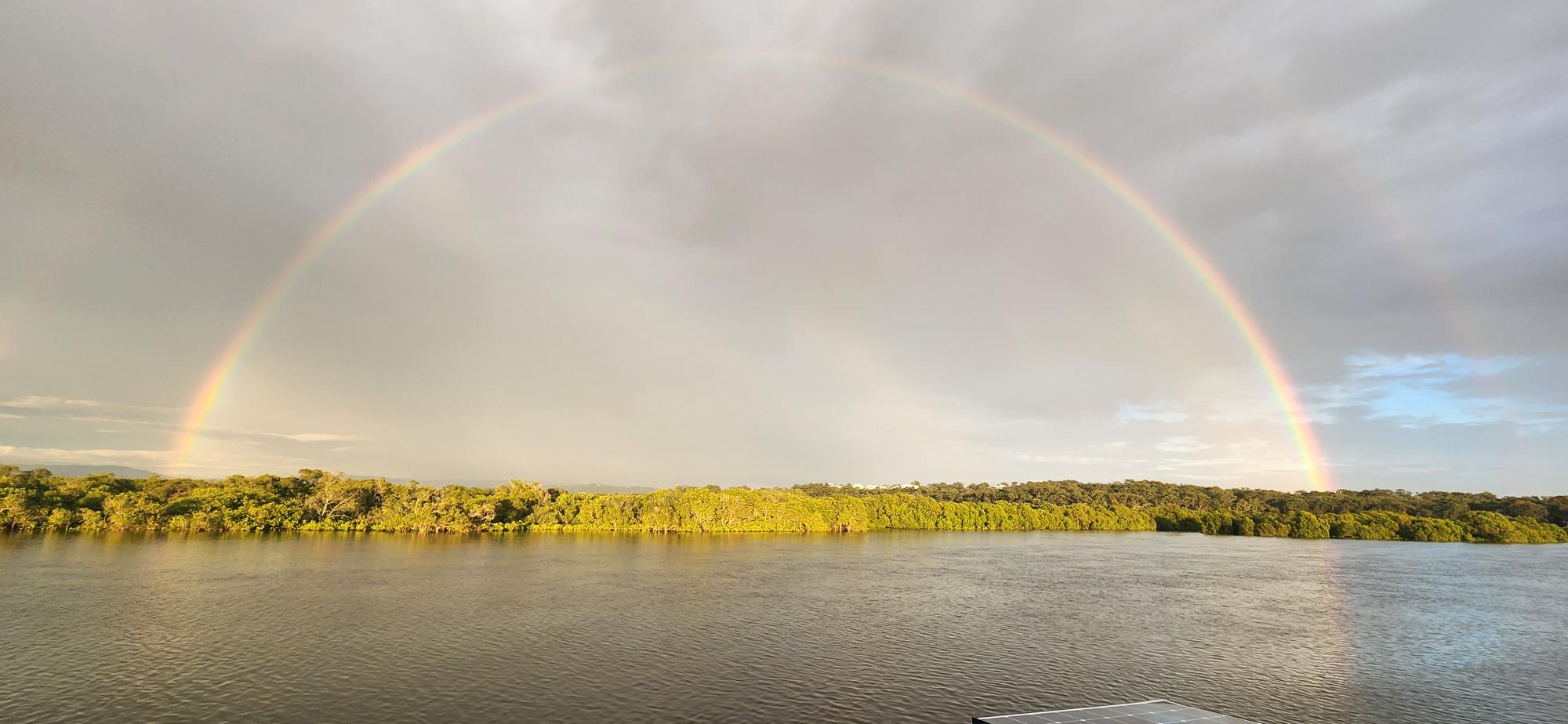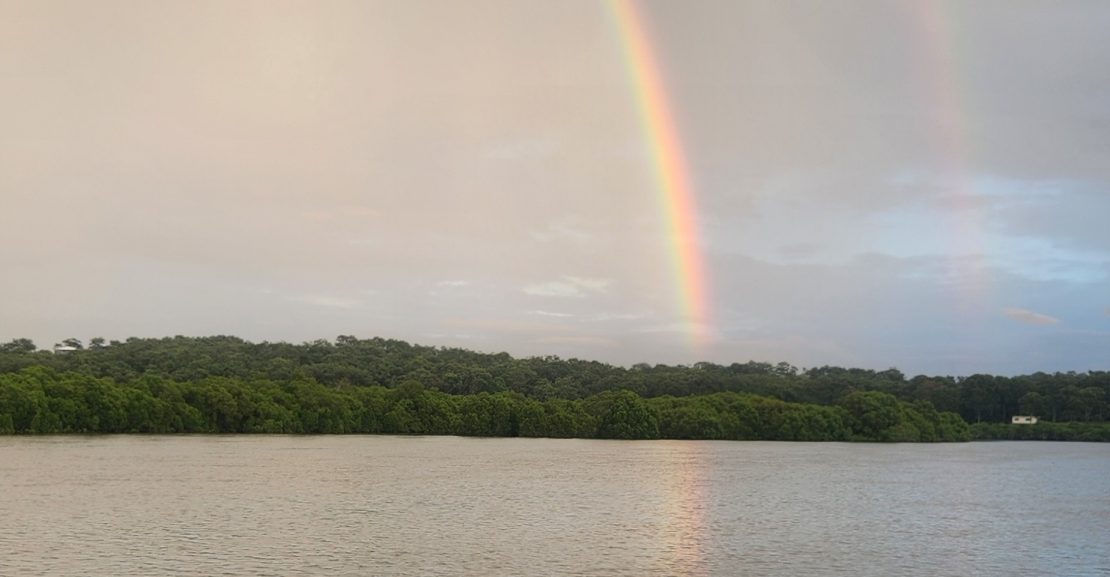Photo Taken Aboard ‘The Seaview’
While enjoying a peaceful holiday on the houseboat ‘The Seaview’, Sarah and crew were treated to a stunning natural phenomenon: a full semicircle rainbow, arching vibrantly across t he sky after a rainfall. This rare visual treat not only added a splash of color to our day but also served as a perfect example of optical and meteorological science in action.
he sky after a rainfall. This rare visual treat not only added a splash of color to our day but also served as a perfect example of optical and meteorological science in action.
How Rainbows Form Rainbows form through a combination of reflection, refraction, and dispersion of light in water droplets. Here’s a step-by-step breakdown:
- Refraction: As sunlight enters a raindrop, it slows down and bends due to the change in medium (from air to water). This bending of light is known as refraction and it separates the light into its constituent colors.
- Reflection: The light hits the back of the raindrop and reflects off the inner surface. This step is crucial as it sends the light back toward the observer.
- Dispersion: As the light exits the raindrop, it undergoes a second refraction. During this process, light is bent again and further dispersed into a spectrum of colors. This dispersion occurs because different colors of light bend at slightly different angles. Red light bends the least while violet bends the most.
Viewing the Full Semicircle The full semicircle of a rainbow is a rare sight because the Earth’s surface usually obstructs the lower part of the arc. However, from a higher vantage point such as a houseboat, the observer can see more of this circle, especially if the sun is at the right angle (low in the sky) and the sky opposite the sun is filled with raindrops.
The panoramic view from ‘The Seaview’ allowed Sarah to capture the full semicircle, showcasing all the spectral colors from red at the top to violet at the bottom. This phenomenon not only provides a breathtaking view but also an excellent demonstration of geometric optics.

Why the Colors? The colors of the rainbow are a result of the different degrees of bending for each color. This range of angles creates a spectrum, with each color appearing at its specific angle relative to the observer. That’s why a rainbow always appears in the same order of colors, with red on the outside (as it bends the least and thus appears at the highest angle) and violet on the inside.
Capturing a full semicircle rainbow from ‘The Seaview’ was a fortuitous moment that combined ideal weather conditions with the perfect observational spot. This image not only serves as a reminder of the beauty of natural phenomena but also illustrates the fascinating interplay of physics and nature.

